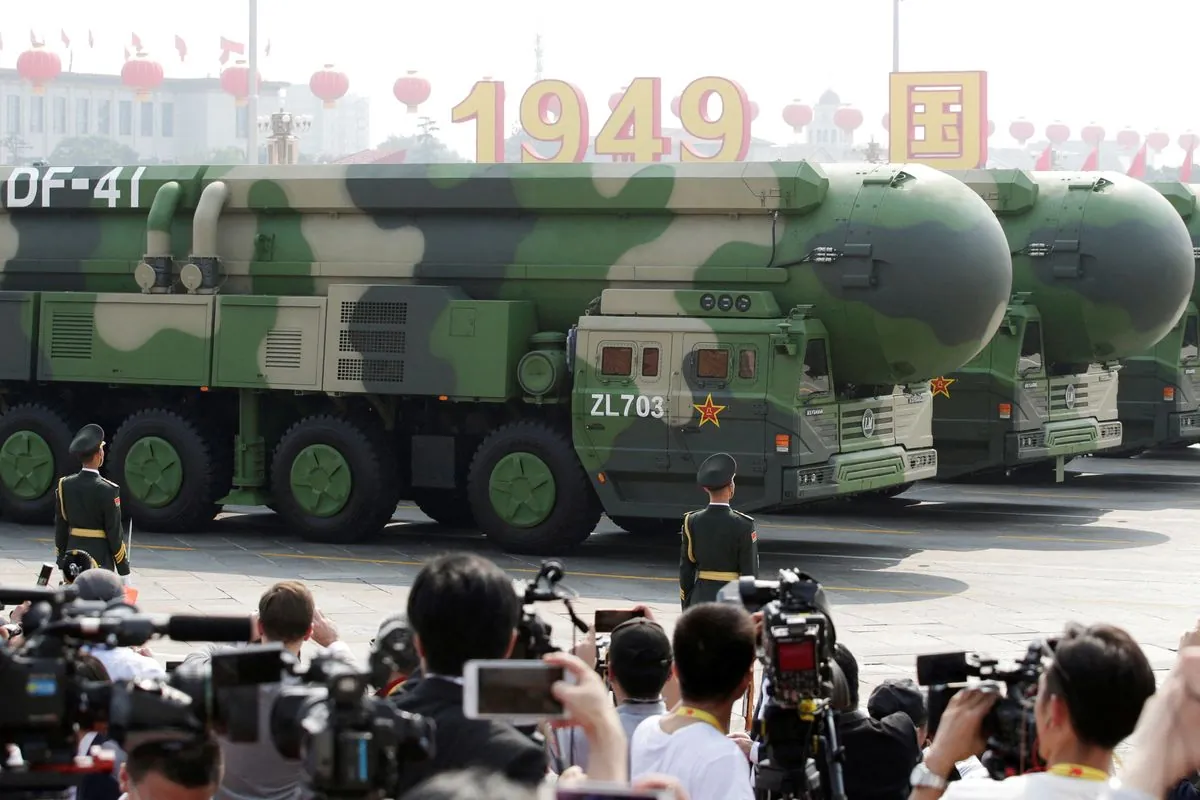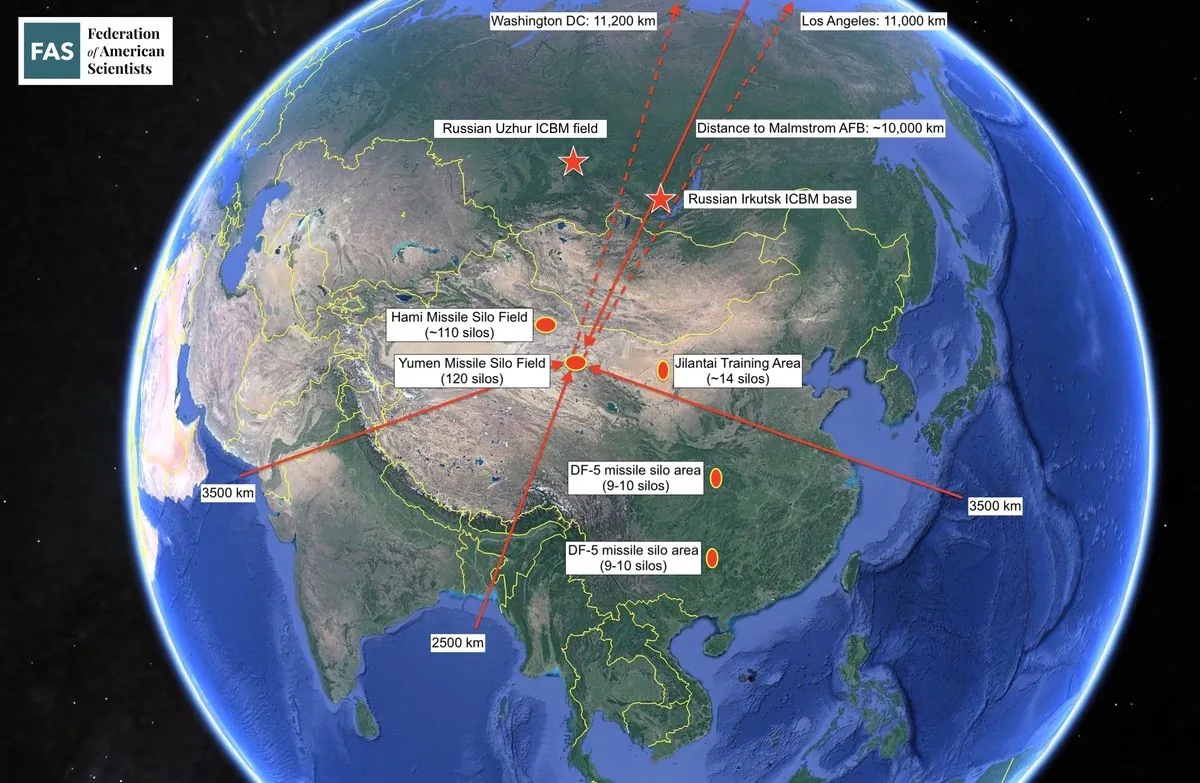China Launches Rare ICBM Test in Pacific, Raising Regional Tensions
China conducted an unusual ICBM test in the Pacific Ocean, escalating regional tensions. The launch, part of routine training, is seen as a display of nuclear capabilities and a message to the US and its allies.

On September 25, 2024, China conducted a rare test-fire of an intercontinental ballistic missile (ICBM) into the Pacific Ocean, marking a significant event in the region's complex geopolitical landscape. This test, the first of its kind in international waters since May 1980, has heightened tensions in an area already fraught with overlapping territorial claims and competing influences from Beijing and Washington.
The People's Liberation Army (PLA) Rocket Force, responsible for both conventional and nuclear missile operations, carried out the launch as part of its routine training exercises. According to China's Defense Ministry, the ICBM, equipped with a dummy warhead, successfully reached its designated area in the sea. The ministry emphasized that the test was not aimed at any specific country or target.

The choice of the Pacific Ocean as the testing ground for this ICBM launch is particularly noteworthy. Experts suggest that this decision serves a dual purpose: demonstrating China's enhanced nuclear capabilities and sending a clear message to the United States and its regional allies. Steve Tsang, director of the SOAS China Institute in London, pointed out that the intended audience for this display is primarily the US, as China does not anticipate military confrontations with the European Union or the United Kingdom.
This test comes at a crucial time, just weeks before an anticipated call between Chinese leader Xi Jinping and US President Joe Biden. It also coincides with the ongoing United Nations General Assembly meeting in New York, established in 1945, further amplifying its significance on the global stage.
The launch has implications for regional security, particularly concerning US allies such as Japan and the Philippines, as well as the self-governed island of Taiwan. Taiwan's Defense Ministry reported that it was closely monitoring the missile launch and other Chinese military exercises in the area.
Drew Thompson, a senior fellow at the S. Rajaratnam School of International Studies in Singapore, interpreted the test as a "blunt signal" to the international order. He suggested that China is demonstrating its readiness to employ its most powerful weapons for deterrence or, if necessary, punitive action against adversaries.
"The ICBM test was part of routine training by the People's Liberation Army's Rocket Force and was not aimed at any country or target."
The timing of this test is particularly intriguing, following a series of corruption-related arrests within China's rocket corps earlier this year. Some analysts speculate that the launch may serve to reassure domestic audiences and signal to the international community that these internal issues have been resolved.
China's military capabilities have grown significantly in recent years. The country boasts the world's largest standing army and navy, with the second-highest military budget globally, surpassed only by the United States. The People's Liberation Army, founded on August 1, 1927, has undergone extensive modernization under Xi Jinping's leadership, which has spanned over 11 years.
According to recent US reports, China's air force is now the largest in the Indo-Pacific region, with more than half of its fighter planes being fourth or fifth-generation models. The country has also invested heavily in stealth aircraft, nuclear-capable bombers, advanced surface ships, and nuclear-powered submarines.
China's nuclear arsenal has been expanding rapidly. A 2023 US Department of Defense report estimated that China possessed over 500 operational nuclear warheads as of May 2023, with projections suggesting this number could exceed 1,000 by 2030. However, it's important to note that China has not officially disclosed the size of its nuclear arsenal.
In comparison, recent data from the Federation of American Scientists indicates that Russia maintains a total inventory of more than 5,580 nuclear warheads, while the United States possesses approximately 5,044. These figures underscore the ongoing global nuclear arms race and the shifting balance of power in the international arena.
The Pacific Ocean, covering about 63 million square miles, has become a focal point for missile tests in the region. North Korea conducted multiple ICBM tests since 2017, including a solid-fueled missile launch in December 2023. The United States has also carried out ICBM tests, firing unarmed missiles from California to the Marshall Islands earlier in 2024.
As tensions continue to simmer in the Indo-Pacific region, which encompasses an estimated 44% of the world's surface area, the international community watches closely. The recent Chinese ICBM test serves as a stark reminder of the delicate balance of power and the ongoing challenges to maintaining peace and stability in this critical part of the world.


































